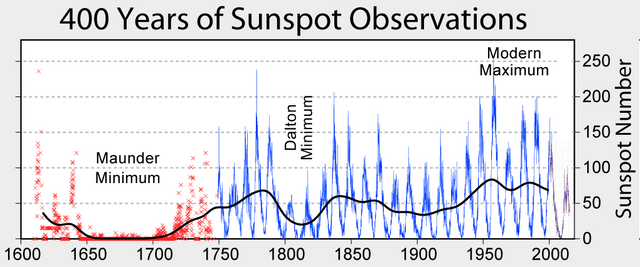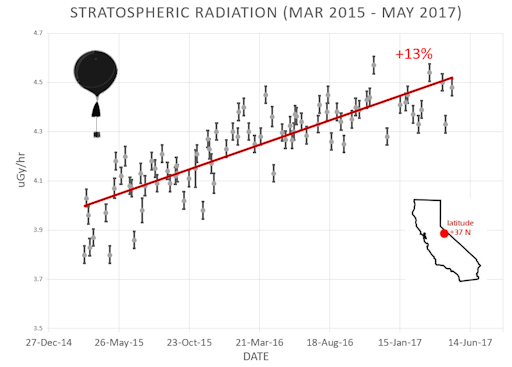The Sun's on Valium...now what?

The sun has gone eerily quiet. We could easily have missed this story amid the more prevalent headlines around climate change and strange weather patterns. Scientists have been tracking and numbering solar sunspot cycles starting from 1755, which marked the beginning of the 1st tracked cycle. We're now in the 24th solar cycle, and observers are getting concerned.
Reduced Sunspot Activity
Solar cycles were first documented by Samuel Schwabe, who noticed solar sunspot activity varies over periods of 11 years. Our current cycle is on track to have the lowest level of sunspot activity of all the cycles documented to date. These "solar minimum" periods are often associated with higher penetration of cosmic rays (radiation) through our atmosphere and cooling temperatures. Muted cycles have been associated with cooling periods in the 1970s, early 1800s, and much of the 17th and 18th centuries (a period known as the Maunder Minimum).

More Cosmic Radiation
During periods of high solar activity, the sun shields the earth from cosmic rays as solar storms disrupt their path to our atmosphere. During solar minimums, cosmic radiation has a more direct path to the Earth, and observed radiation levels increase. Cosmic radiation can disrupt power grids & electronics, increase cloud cover and trigger more lightning - perhaps accounting for some of the unsettled weather we've been experiencing.

Here's some more insight from NASA:
https://science.nasa.gov/science-news/news-articles/solar-minimum-is-coming
Scientists continue to debate the implications of our current solar cycle and the trends for future cycles, but one thing is certain: we're in for some interesting days ahead. What do you think? Is this cause for concern?